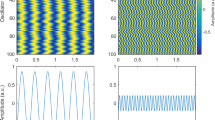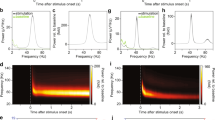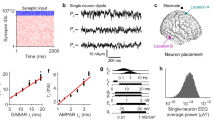Abstract.
Macroscopic EEG travelling wave phenomena and cortical pulse synchronisation effects are related within a single simple simulation. Non-specific activation acts to control the transfer function of the simulated cortex, and thus determines the relative amplitude of macroscopic EEG waves generated by rhythmic inputs. When concurrent asynchronous excitatory inputs to separate, local, cortical sites are introduced, the simulation reproduces both gamma-band (40 Hz) electrocorticogram (ECoG) activity and synchronous oscillation of action potential pulse density at the separate sites. The gamma-band ECoG and pulse synchrony effects depend on different mechanisms: the former upon local excitatory/inhibitory interactions, and the latter on cortico-cortical interactions. The pattern of synchronous activity depends upon both structural and dynamic aspects of gain, and is sustained by linearised versions of the simulation’s state equations. Dynamic properties of the simulation, which are independent of scale, describe both microscopic and macroscopic phenomena, all in accord with physiological findings.
Similar content being viewed by others
Author information
Authors and Affiliations
Additional information
Received: 25 June 1996 / Accepted in revised form: 29 November 1996
Rights and permissions
About this article
Cite this article
Wright, J. EEG simulation: variation of spectral envelope, pulse synchrony and ≈40 Hz oscillation. Biol Cybern 76, 181–194 (1997). https://doi.org/10.1007/s004220050331
Issue Date:
DOI: https://doi.org/10.1007/s004220050331




